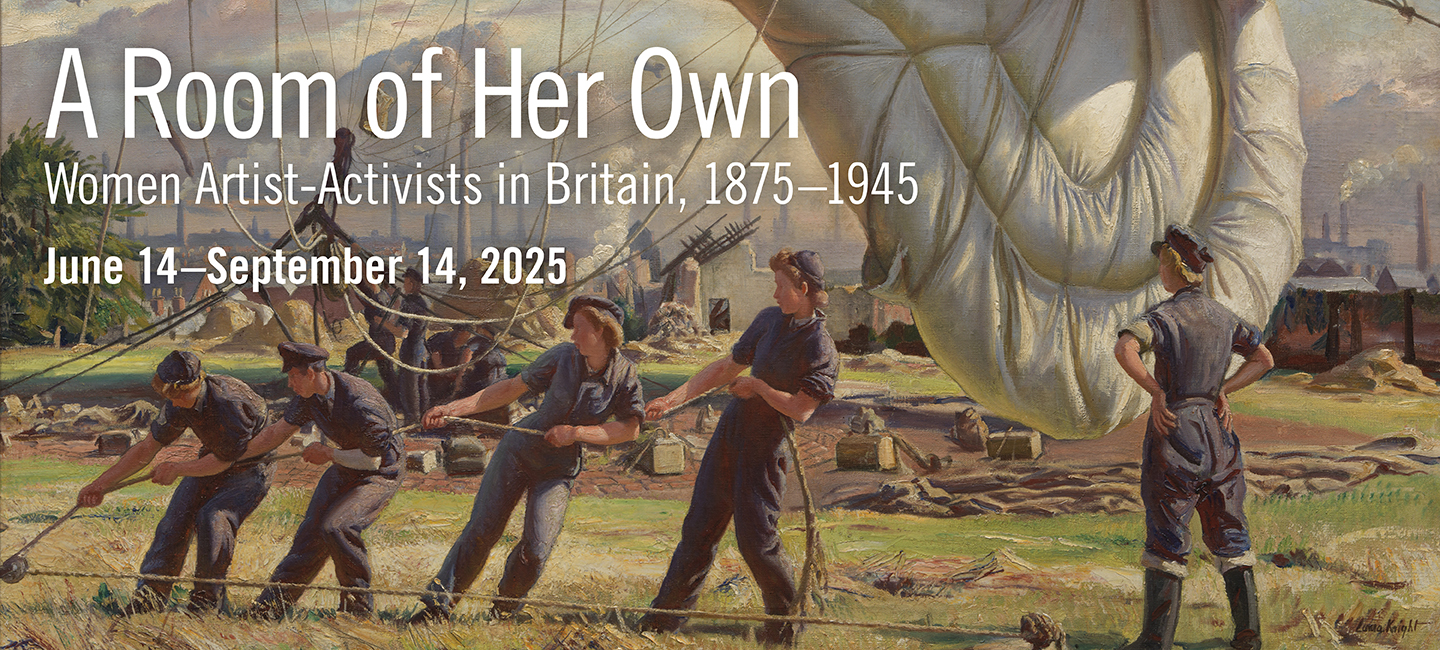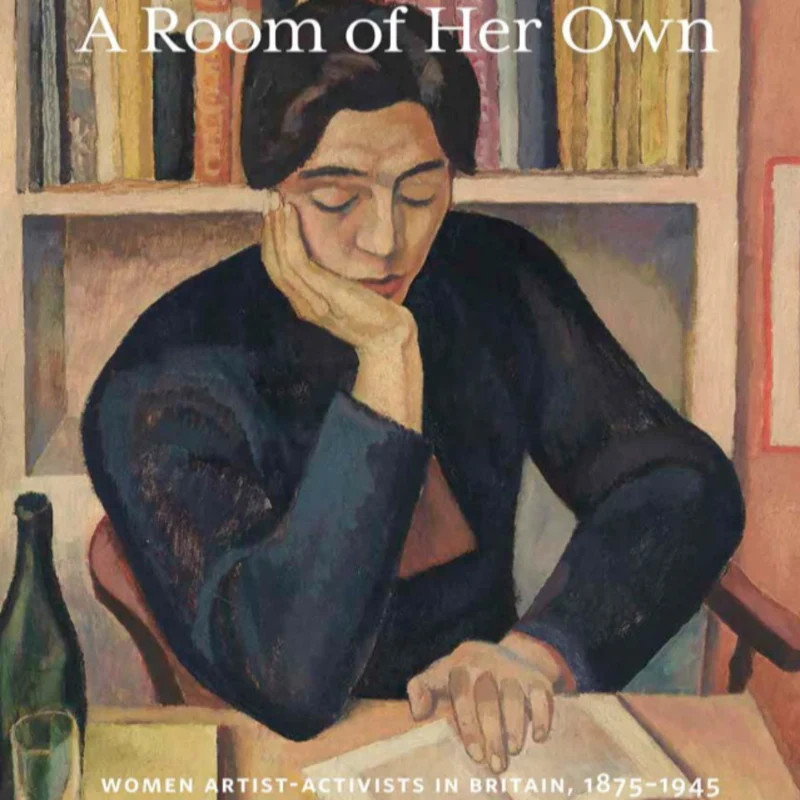About the Exhibition
 Nina Hamnett, Portrait of a Woman, 1917, oil on canvas. Private collection
Nina Hamnett, Portrait of a Woman, 1917, oil on canvas. Private collectionIn her 1929 essay “A Room of One’s Own,” Virginia Woolf (1882–1941) argued that for women to write fiction, they needed physical space of their own in which to think and work, as well as a sufficient income. Woolf recognized that long-existing gendered expectations have limited women from pursuing a creative life beyond domestic responsibilities. She exhorted women of her time to make every effort to realize their talents and foster an environment in which women can flourish, concluding “so to work, even in poverty and obscurity, is worth while.”
A Room of Her Own: Women Artist-Activists in Britain, 1875–1945 celebrates twenty-five women artists working in Great Britain during Woolf’s lifetime; women who fought to establish themselves as professional artists at a time when the field was dominated by men. These artists created spaces for themselves and others—in their homes, studios, art schools, and exhibition sites—insisting their production deserved critical attention as well as appropriate compensation. Many of them gave public lectures and wrote books about navigating the profession. They served as teachers in established art schools or founded their own schools. They made being a woman artist normative at a time when women faced countless challenges to secure training, join professional art societies, and find opportunities to show in serious exhibitions.
The work of these artists extended to activism beyond the art world. Through unconventional personal choices, creating community in their neighborhoods, and advocating for causes such as women’s suffrage, wartime service, or antiwar protest, the artists of A Room of Her Own enacted social and political change. Their efforts created opportunities that helped these women thrive as artists and claim much-needed space—both physical and psychic—for themselves, for their contemporaries, and for future generations.
A Room of Her Own: Women Artist-Activists in Britain, 1875–1945 is organized by the Clark Art Institute and curated by Alexis Goodin, associate curator. A Room of Her Own is on view in the exhibition galleries in the Clark Center's lower level.
Generous support for A Room of Her Own is provided by Joanne Barker, Carol and Bob Braun, Richard and Carol Seltzer, Denise Littlefield Sobel, and the Tavolozza Foundation.

